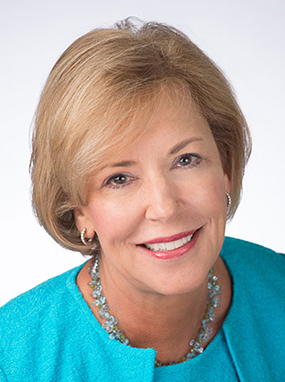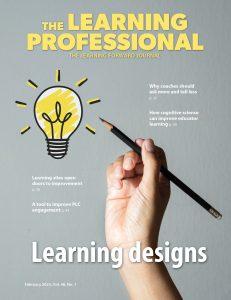In my view, no learning model has captured educators’ attention more than collaborative learning structures. Over the last few decades, they’ve had many names, starting with professional learning communities (PLCs).
In some corners, they became professional learning networks or learning teams. We also use the terms communities of practice and networked improvement communities. The approach to the work of these collaborating professionals has also been described in a number of ways, including cycles of inquiry, the Big Four questions, action research, implementation science, improvement science, and appreciative inquiry.
Learning communities serve a variety of education constituencies, beginning with grade-level or subject-matter teams, vertical-grade or subject-band teams, school leadership teams, cadres of principals, or teams of employees in district offices. Communities cross schools, systems, states, and national borders.
Educators’ responses to these opportunities to collaborate depend on a number of factors. Typically, early response is mixed — some are positive, others skeptical. Over time, depending on the quality of implementation, they are embraced or dismissed.
It is in the best interest of educators and their students to ensure such teams can succeed. Only then will they achieve their purpose. These learning structures are the most important opportunity we have for fulfilling a vision of excellent teaching and learning for every student every day.
When a school district prioritizes a culture of collaborative professionalism — that is, it becomes a true learning system — it invests in building the professional capital of all staff. By engaging educators in shared learning, planning, and reflection, we make it possible for quality instruction to spread from classroom to classroom and school to school. We can ensure that a child’s education is not dependent on his or her ZIP code or classroom placement.
This is not easy work. Through my experience, I have identified three core elements I view as essential to learning teams’ success. When I say success, I mean these collaborative structures are producing substantive change in participants’ practice and better student outcomes. These core elements are a cycle of learning, curriculum, and assessments.
A cycle of learning
High-functioning collaborative learning teams commit to a process that members consistently follow to achieve the outcomes teams are designed to deliver. Most familiar is the PDSA cycle: plan, do, study, act.
The Learning Forward cycle includes data and root cause analysis; goal-setting for students (SMART format) and educators (KASAB or knowledge, attitudes, skills, aspirations, and behaviors); an intentional learning agenda that focuses on deep study of curriculum and assessments; implementation with classroom-based support; and monitoring and assessment with intent to determine what worked and what needs to be improved.
Skilled facilitation and protocols and tools ensure that time is spent using the process rather than inventing it.
Curriculum
High-quality curriculum tied to standards students are expected to master is essential for school-level teams. During the collaborative learning cycle, educators engage in deep study for understanding, preparation for instruction, implementation, monitoring, and refinement of lessons.
Without such a curriculum in hand, teams have to take time to develop every lesson and rarely get the opportunity to go deep in understanding and studying the standards students will master within lessons or exploring the challenges students may face and ways in which teachers can prepare to respond.
When teachers have a curriculum, they are doing so much more than reading a script. They apply their understanding of students’ needs and interests in the delivery and adaption of instructional materials, knowing they are starting with solid materials aligned to rigorous student standards.
Assessments
Formative and summative assessments are essential to informing teacher decision-making, learning, and planning. While a curriculum provides a comprehensive approach to guiding students toward the required standards, aligned assessments provide critical information about what they know and what they need to learn.
Preassessments help educators determine how to spend their limited time and which lessons and strategies are most important for the time allotted. Preassessments provide guidance for grouping and regrouping students to leverage student and teacher strengths.
Daily formative assessments provide insights into the impact of each lesson and where immediate adjustments may need to be made. Post-assessments illuminate the level of success of the overall unit and identify where reteaching may be required.
See the potential
I have been conducting an informal poll over the last several months, asking people how they spend their PLC time and, more importantly, how they know their PLCs are making a difference. Many answers have been disappointing. My hope is that all leaders continue to see the potential of collaborative learning structures and, at the same time, they consider these three factors and give them the attention they need.
I have no doubt that when all three are integral to team learning, practitioners will have compelling evidence about why investing in collaborative learning structures is essential to the success of all teachers and students.
This column appears in the February 2018 issue of The Learning Professional.
About the author
Stephanie Hirsh is executive director of Learning Forward.




![Poil blog v1[1]](https://learningforward.org/wp-content/uploads/bb-plugin/cache/poil-blog-v11-custom_crop.jpg)




